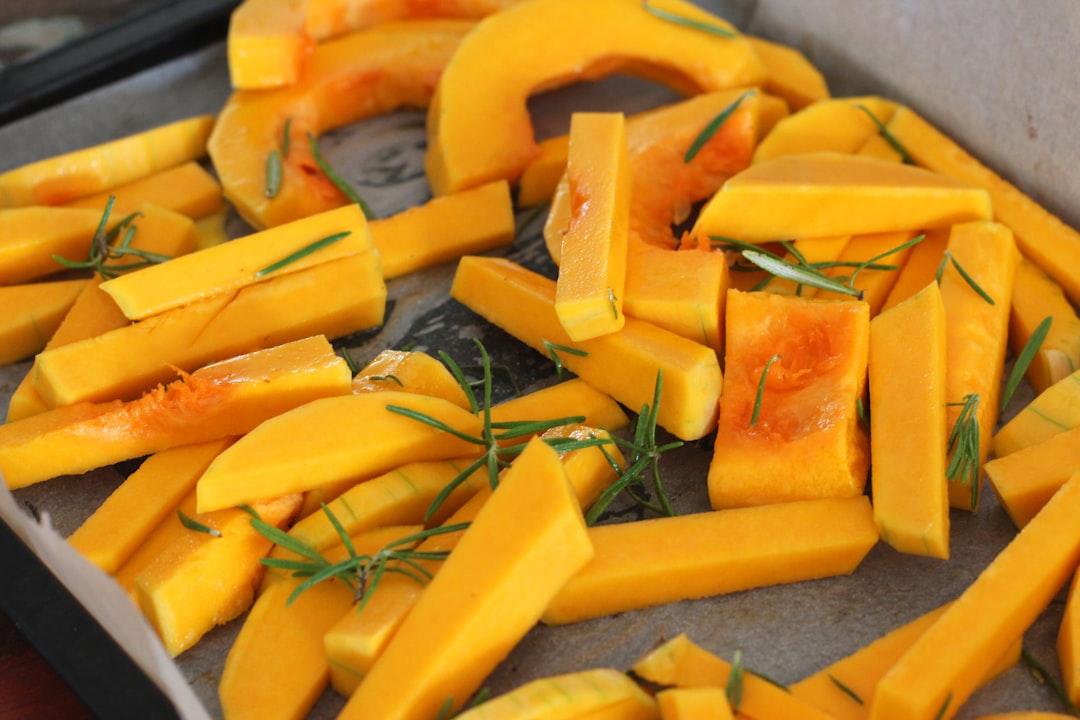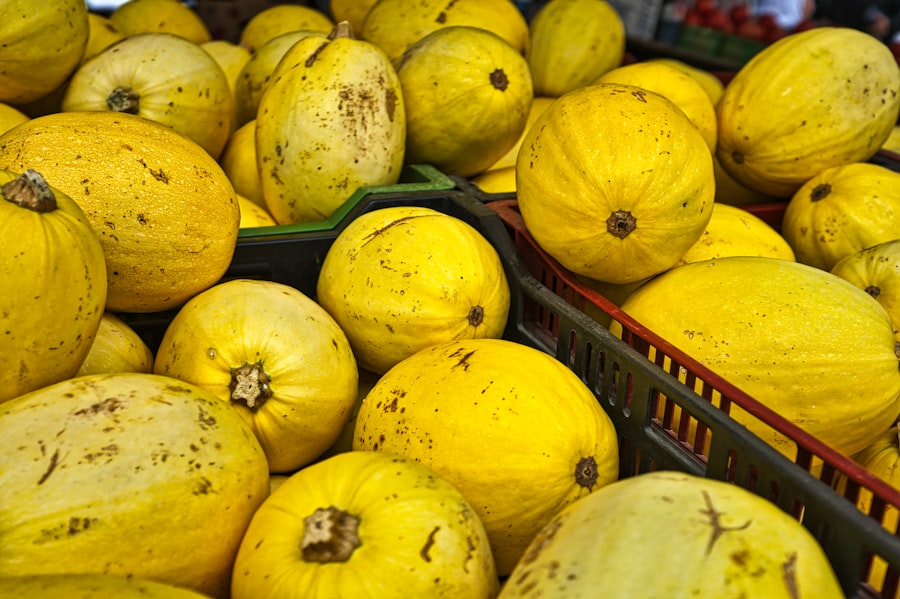Freezing Yellow Squash: No Blanching Required

Yellow squash is a versatile and nutritious vegetable that is enjoyed by many. However, it can be challenging to keep yellow squash fresh for an extended period of time. Freezing yellow squash is an excellent way to preserve its freshness and enjoy it all year round. There are several benefits to freezing yellow squash, including retaining its nutrients and flavor, as well as saving time and effort in the kitchen.
Freezing yellow squash allows you to enjoy this delicious vegetable even when it is out of season. By freezing yellow squash, you can extend its shelf life and have it readily available whenever you need it. This is especially beneficial if you have a surplus of yellow squash from your garden or if you find a great deal at the grocery store.
Key Takeaways
- Freezing yellow squash is a great way to enjoy it all year round.
- Preparing yellow squash for freezing involves washing, slicing, and drying it.
- Yellow squash can be frozen without blanching, which saves time and preserves its nutrients.
- Not blanching yellow squash also helps it retain its texture and flavor.
- Equipment needed for freezing yellow squash includes a baking sheet, freezer bags, and a marker for labeling.
Preparing Yellow Squash for Freezing
Before freezing yellow squash, it is important to properly prepare it. Start by choosing the right yellow squash. Look for firm, unblemished squash that is free from any signs of decay. Smaller squash tend to have a better texture when frozen, so opt for those if possible.
Once you have selected your yellow squash, wash it thoroughly under running water to remove any dirt or debris. After washing, cut off the ends of the squash and slice it into your desired shape and size. Some people prefer to slice the squash into rounds, while others prefer to cut it into cubes or strips.
If desired, you can remove the seeds from the yellow squash before freezing. To do this, simply cut the squash in half lengthwise and use a spoon to scoop out the seeds. Removing the seeds can help prevent them from becoming mushy when frozen.
Freezing Yellow Squash Without Blanching
One method of freezing yellow squash is to do so without blanching it first. Blanching is a process in which vegetables are briefly cooked in boiling water before being plunged into ice water to stop the cooking process. While blanching can help preserve the color and texture of some vegetables, it is not necessary for yellow squash.
To freeze yellow squash without blanching, start by spreading the prepared squash in a single layer on a baking sheet. Place the baking sheet in the freezer and allow the squash to freeze for a few hours, or until it is firm to the touch. Once frozen, transfer the squash to airtight freezer bags or containers, removing as much air as possible before sealing.
It is important to note that freezing yellow squash without blanching may result in a slightly softer texture when thawed. However, this method is quick and easy, and it allows you to enjoy the natural flavor and nutrients of the squash.
Benefits of Not Blanching Yellow Squash
| Benefits of Not Blanching Yellow Squash |
|---|
| Retains more nutrients |
| Preserves natural flavor |
| Keeps texture firmer |
| Reduces cooking time |
| Less prep work |
There are several benefits to freezing yellow squash without blanching. One of the main advantages is that it helps retain the nutrients and flavor of the squash. Blanching can cause some loss of nutrients, so by skipping this step, you can ensure that your frozen yellow squash is as nutritious as possible.
Another benefit of not blanching yellow squash is that it saves time and effort in the kitchen. Blanching can be a time-consuming process, as it requires boiling water and ice baths. By skipping this step, you can streamline the freezing process and have your yellow squash ready for the freezer in no time.
Equipment Needed for Freezing Yellow Squash
To freeze yellow squash, you will need a few basic pieces of equipment. First, you will need a sharp knife for cutting the squash into your desired shape and size. A cutting board will also be necessary for preparing the squash.
Next, you will need baking sheets or trays for freezing the prepared yellow squash. These should be lined with parchment paper or silicone mats to prevent sticking.
Finally, you will need airtight freezer bags or containers for storing the frozen yellow squash. Make sure to label the bags or containers with the date of freezing to keep track of their freshness.
If you do not have access to a freezer, you can still preserve yellow squash by canning it. Canning requires a different set of equipment, including canning jars, lids, and a pressure canner. The process for canning yellow squash is more involved and time-consuming than freezing, but it allows you to store the squash at room temperature for an extended period of time.
Proper Storage of Frozen Yellow Squash

Proper storage is essential for maintaining the quality of frozen yellow squash. After transferring the frozen squash to airtight freezer bags or containers, make sure to remove as much air as possible before sealing. This will help prevent freezer burn and maintain the freshness of the squash.
Store the frozen yellow squash in the coldest part of your freezer, such as the back or bottom shelf. This will help ensure that the squash remains frozen at all times.
It is also important to note that frozen yellow squash should be used within a certain timeframe to maintain its quality. While it can technically be stored indefinitely in the freezer, it is best to use it within 8-12 months for optimal flavor and texture.
Thawing Frozen Yellow Squash
When you are ready to use your frozen yellow squash, it is important to thaw it properly. Thawing the squash slowly in the refrigerator is the best method, as it allows for even thawing and helps maintain its texture.
To thaw frozen yellow squash in the refrigerator, simply transfer it from the freezer to a plate or bowl and place it in the refrigerator overnight. If you need to thaw it more quickly, you can use the defrost setting on your microwave or place the frozen squash in a sealed plastic bag and submerge it in cold water.
It is important to note that once yellow squash is thawed, it should be used within a few days. Do not refreeze thawed yellow squash, as this can affect its texture and flavor.
Cooking with Frozen Yellow Squash
Frozen yellow squash can be used in a variety of recipes, making it a versatile ingredient to have on hand. It can be added to soups, stews, casseroles, stir-fries, and more.
When cooking with frozen yellow squash, there is no need to thaw it completely. In fact, using partially thawed squash can help prevent it from becoming mushy. Simply add the frozen squash directly to your recipe and adjust the cooking time as needed.
It is important to note that frozen yellow squash may release some liquid when cooked. To prevent this from affecting the texture of your dish, you can drain the liquid before adding the squash to your recipe.
Recipes Using Frozen Yellow Squash
There are countless ways to incorporate frozen yellow squash into your meals. Here are a few ideas to get you started:
1. Yellow Squash Soup: In a large pot, sauté onions and garlic until softened. Add frozen yellow squash, vegetable broth, and your choice of herbs and spices. Simmer until the squash is tender, then blend until smooth. Serve hot with a dollop of sour cream or Greek yogurt.
2. Yellow Squash Casserole: In a baking dish, layer frozen yellow squash with breadcrumbs, shredded cheese, and a mixture of eggs and milk. Bake in the oven until golden and bubbly.
3. Stir-Fried Yellow Squash: In a hot skillet or wok, stir-fry frozen yellow squash with your choice of vegetables and protein. Season with soy sauce or your favorite stir-fry sauce for a quick and healthy meal.
4. Yellow Squash Fritters: In a bowl, combine thawed frozen yellow squash with flour, eggs, and your choice of seasonings. Form into patties and fry in a skillet until golden brown. Serve with a side of sour cream or applesauce.
Enjoying Fresh Yellow Squash All Year Round
Freezing yellow squash is a simple and effective way to preserve its freshness and enjoy it all year round. By following the proper steps for preparing, freezing, and storing yellow squash, you can ensure that it retains its nutrients and flavor.
Whether you choose to freeze yellow squash without blanching or can it for long-term storage, there are plenty of options for enjoying this versatile vegetable. From soups and stews to casseroles and stir-fries, frozen yellow squash can be incorporated into a wide variety of recipes.
So the next time you have an abundance of yellow squash or come across a great deal at the grocery store, consider freezing it for later use. With a little bit of preparation and the right equipment, you can enjoy fresh yellow squash all year round.
If you’re looking for a comprehensive guide on how to freeze yellow squash without blanching, look no further than this informative article from Lawn World. This step-by-step tutorial provides all the necessary instructions to preserve the freshness and flavor of your yellow squash without the hassle of blanching. Whether you’re a seasoned gardener or a beginner, this article will equip you with the knowledge and techniques needed to successfully freeze your yellow squash. Check out the article here: https://www.lawnworld.com/how-to-freeze-yellow-squash-without-blanching.
FAQs
What is yellow squash?
Yellow squash is a type of summer squash that is typically yellow in color and has a slightly curved shape. It is a popular vegetable that is often used in a variety of dishes.
Why would I want to freeze yellow squash?
Freezing yellow squash is a great way to preserve it for later use. It can be a convenient way to have yellow squash on hand when it is out of season or when you don’t have time to go to the grocery store.
Do I need to blanch yellow squash before freezing it?
No, you do not need to blanch yellow squash before freezing it. This article will provide you with a method for freezing yellow squash without blanching.
What is the best way to freeze yellow squash?
The best way to freeze yellow squash is to slice it into small pieces and then freeze it on a baking sheet. Once the squash is frozen, you can transfer it to a freezer-safe container or bag.
How long can I store frozen yellow squash?
Frozen yellow squash can be stored for up to 8 months in the freezer. After that, it may start to lose its quality and flavor.
What are some ways to use frozen yellow squash?
Frozen yellow squash can be used in a variety of dishes, such as soups, stews, casseroles, and stir-fries. It can also be roasted or grilled after it has been thawed.



